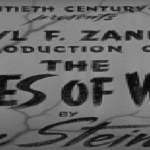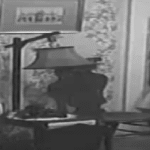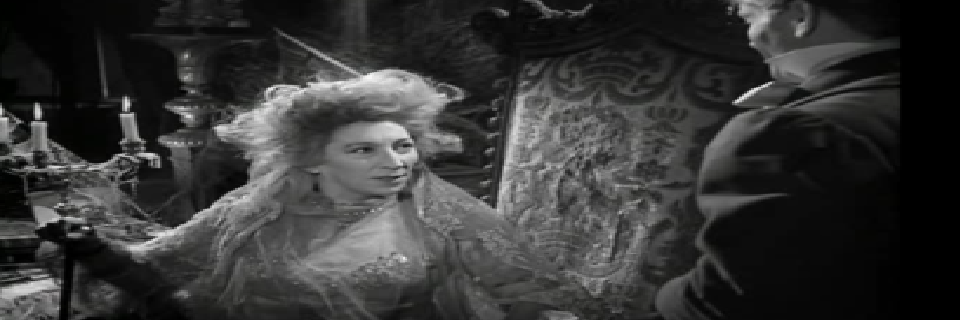David Lean’s 1946 adaptation of Charles Dickens’s Great Expectations remains one of the most acclaimed renditions of the classic novel, translating the intricacies of Victorian England and the emotional weight of Pip’s journey onto the screen with masterful direction, compelling performances, and striking visual composition. Set against a backdrop of moody marshes, crumbling estates and bustling London streets, the film follows the evolution of Philip “Pip” Pirrip, an orphaned boy of humble origins, as he navigates the treacherous terrain of social ambition, love, and personal growth.
The story opens with a haunting sequence on the Kent marshes, where young Pip, played by Anthony Wager, encounters an escaped convict named Magwitch. The convict coerces Pip into stealing food and a file to free him from his chains. Pip’s fearful compliance marks the beginning of a chain of events that will forever alter the course of his life. Soon after, Pip is summoned to the eerie and decaying Satis House, home of the reclusive and eccentric Miss Havisham, portrayed with ghostly allure by Martita Hunt. Once jilted at the altar, she has frozen her life at the moment of betrayal, still wearing her tattered wedding dress and living among the remnants of a never-celebrated wedding feast. At her side is Estella, her beautiful but emotionally distant ward, played first by Jean Simmons and later by Valerie Hobson. Pip becomes entranced by Estella, despite the emotional cruelty she inflicts under Miss Havisham’s direction.
As Pip continues to visit Satis House, he begins to feel shame about his working-class background and yearns for gentility, believing that becoming a gentleman is the only way to win Estella’s love. He apprentices as a blacksmith under his kindly brother-in-law Joe Gargery, played by Bernard Miles, but is unsettled by the coarseness of his life. Then, in a sudden twist of fate, Pip is informed by the lawyer Jaggers, brought to life by Francis L. Sullivan, that he has come into a fortune from an anonymous benefactor and is to be raised as a gentleman in London. Elated and assuming Miss Havisham is the source of his good fortune, Pip leaves behind Joe and his childhood home with barely a backward glance.
In London, the adult Pip, portrayed by John Mills, adopts the airs of a gentleman, studying under the tutelage of Mr Herbert Pocket and indulging in the privileges wealth affords. Despite his transformation in appearance and status, Pip remains emotionally uncertain, especially where Estella is concerned. She too arrives in London, having been educated abroad, and continues to confound Pip with her detached behaviour. Her beauty and elegance are evident, but she reminds Pip repeatedly that she has no heart. Estella is destined to be used by Miss Havisham as an instrument of revenge against the male sex, her coldness cultivated to torment the hearts of men as Miss Havisham’s own had been broken.
Pip’s belief in the link between social class and moral worth begins to erode when he is confronted by the shocking revelation that his benefactor is not Miss Havisham, but Abel Magwitch, the convict he aided as a child. Now a wealthy man after years of toil in Australia, Magwitch has returned to England at great personal risk, driven by a desire to see Pip rise in society. The news unsettles Pip profoundly, forcing him to confront his own snobbery and misplaced values. Though initially repulsed, he comes to see the raw humanity and paternal affection behind Magwitch’s sacrifice.
As the authorities close in on Magwitch, Pip resolves to help him escape. This marks a crucial turning point in Pip’s character arc, as he begins to shed the superficial trappings of gentility and embrace loyalty, gratitude, and moral courage. The escape attempt, however, ends in tragedy. Magwitch is captured and grievously injured, dying in prison shortly thereafter. Before his death, Pip reveals that Magwitch’s long-lost daughter is in fact Estella, a discovery that adds a layer of complexity to the tangled web of relationships.
Meanwhile, Pip’s fortunes decline. His allowance is cut off, and he falls into debt. In his lowest moment, he is rescued by Joe Gargery, whose quiet goodness and steadfast love offer a stark contrast to the pretentious society Pip had tried so hard to enter. Joe nurses Pip back to health without judgement, embodying the film’s underlying message that true gentility lies in character, not in class.
The film culminates with a reimagined ending. In Dickens’s novel, two versions exist, one more ambiguous, the other suggesting reconciliation. Lean’s version opts for a more romantic resolution. Pip returns to Satis House, now a hollow shell following Miss Havisham’s death in a fire, and finds Estella wandering its ruins. She has endured her own suffering, having been trapped in a loveless marriage, and is now changed by hardship. Their reunion is understated, yet rich with the possibility of healing and new beginnings.
Visually, the film is a triumph. Lean and cinematographer Guy Green create a chiaroscuro world that echoes the internal conflicts of the characters. The gothic decay of Satis House and the fog-swept marshes evoke a sense of psychological and emotional entrapment. The use of light and shadow lends the film an expressionistic quality that underscores its thematic weight. The performances, too, are finely judged. John Mills lends Pip a believable mix of naïveté and earnestness, while Valerie Hobson’s Estella hints at vulnerability beneath the icy façade. Martita Hunt’s Miss Havisham is a figure both grotesque and tragic, a woman consumed by the past yet strangely compelling in her faded grandeur.
Lean’s adaptation succeeds not simply as a condensed version of a literary classic, but as a film that stands on its own merits, capturing the moral complexity and emotional resonance of Dickens’s story. While certain elements of the novel are inevitably omitted or streamlined—such as Pip’s extended time with Herbert, or the detailed subplots involving Wemmick—the essence of the narrative remains intact. At its heart, Great Expectations is about the painful yet necessary journey towards self-awareness and redemption. Pip’s transformation from a boy enchanted by wealth and class into a man who recognises the worth of humility, loyalty and love is handled with subtlety and depth.
The film’s lasting power lies in its ability to balance spectacle with introspection. It presents a world full of grand ambitions and shattered illusions, yet ends on a quiet, hopeful note. In doing so, it remains faithful to the spirit of Dickens, whose works so often portray the possibility of goodness persisting amid adversity. Lean’s Great Expectations is more than a period piece, it is a meditation on the human condition, rendered in celluloid with elegance, empathy, and enduring cinematic craft.







